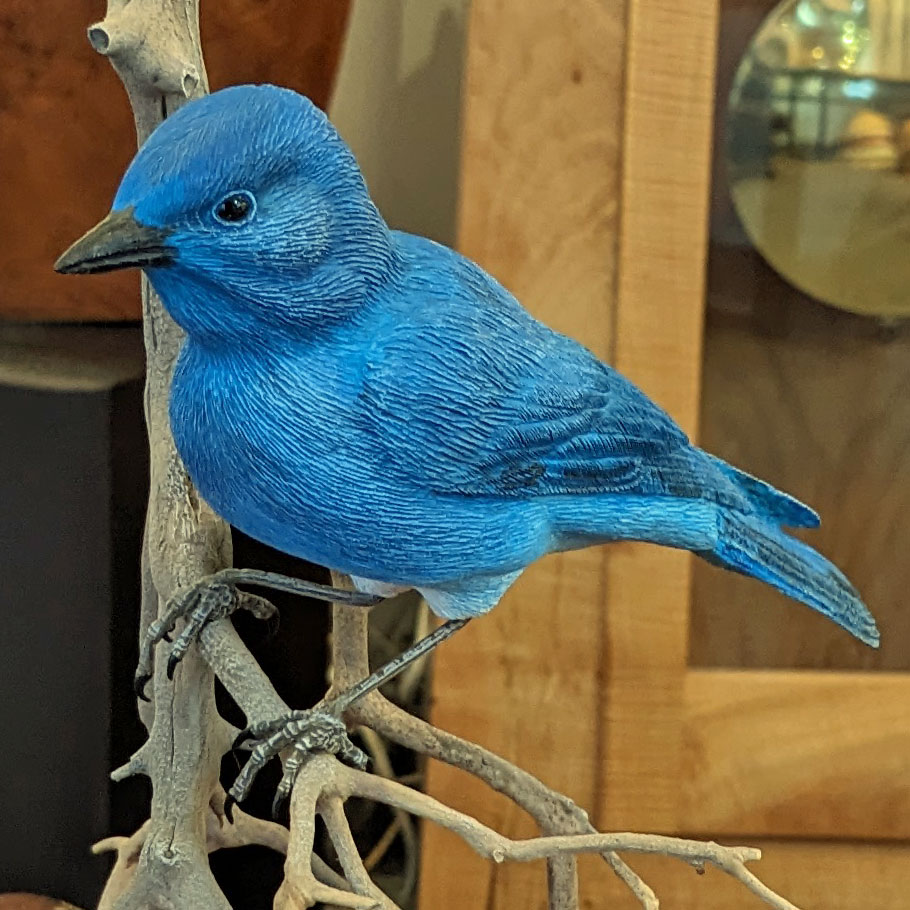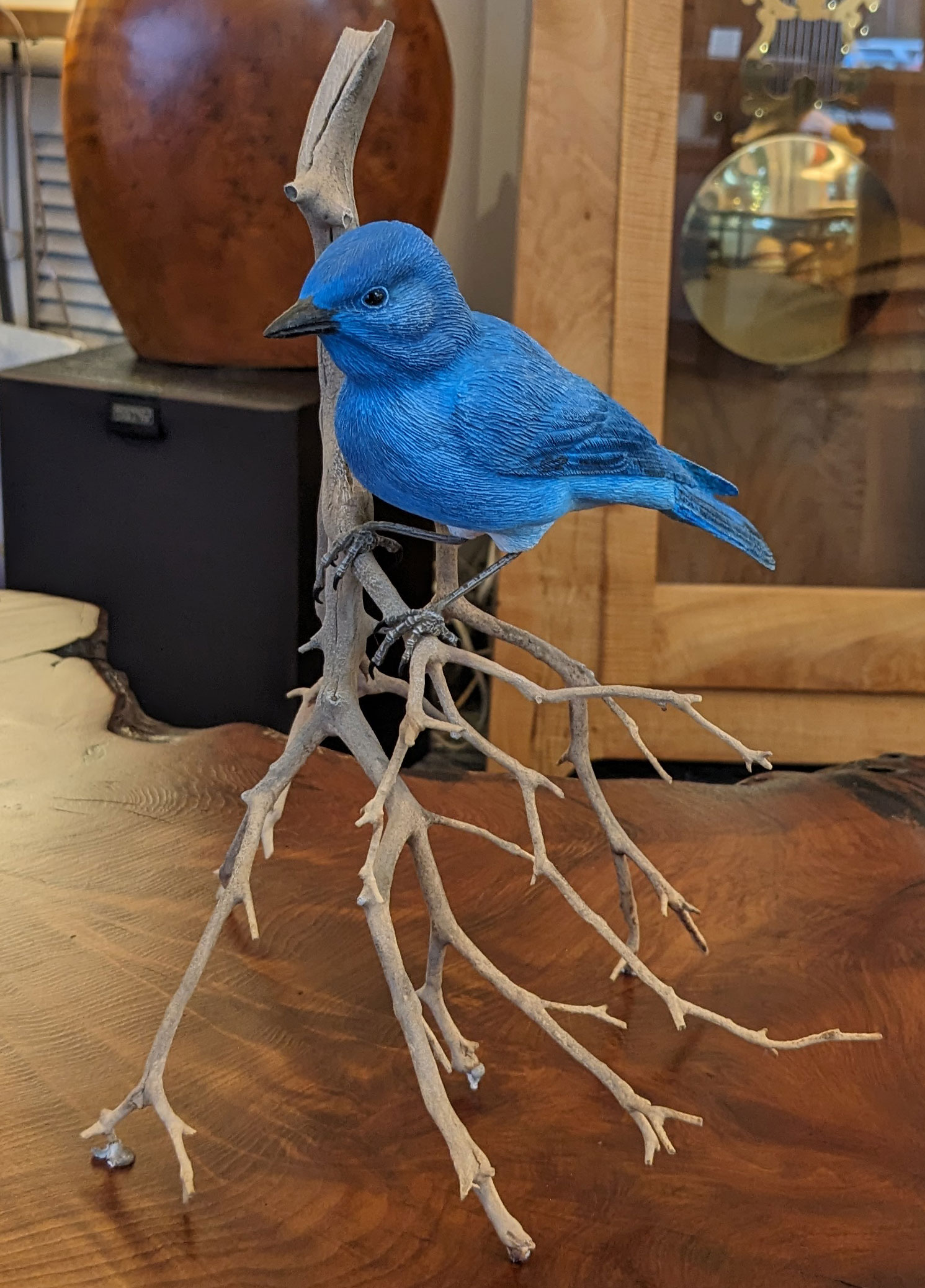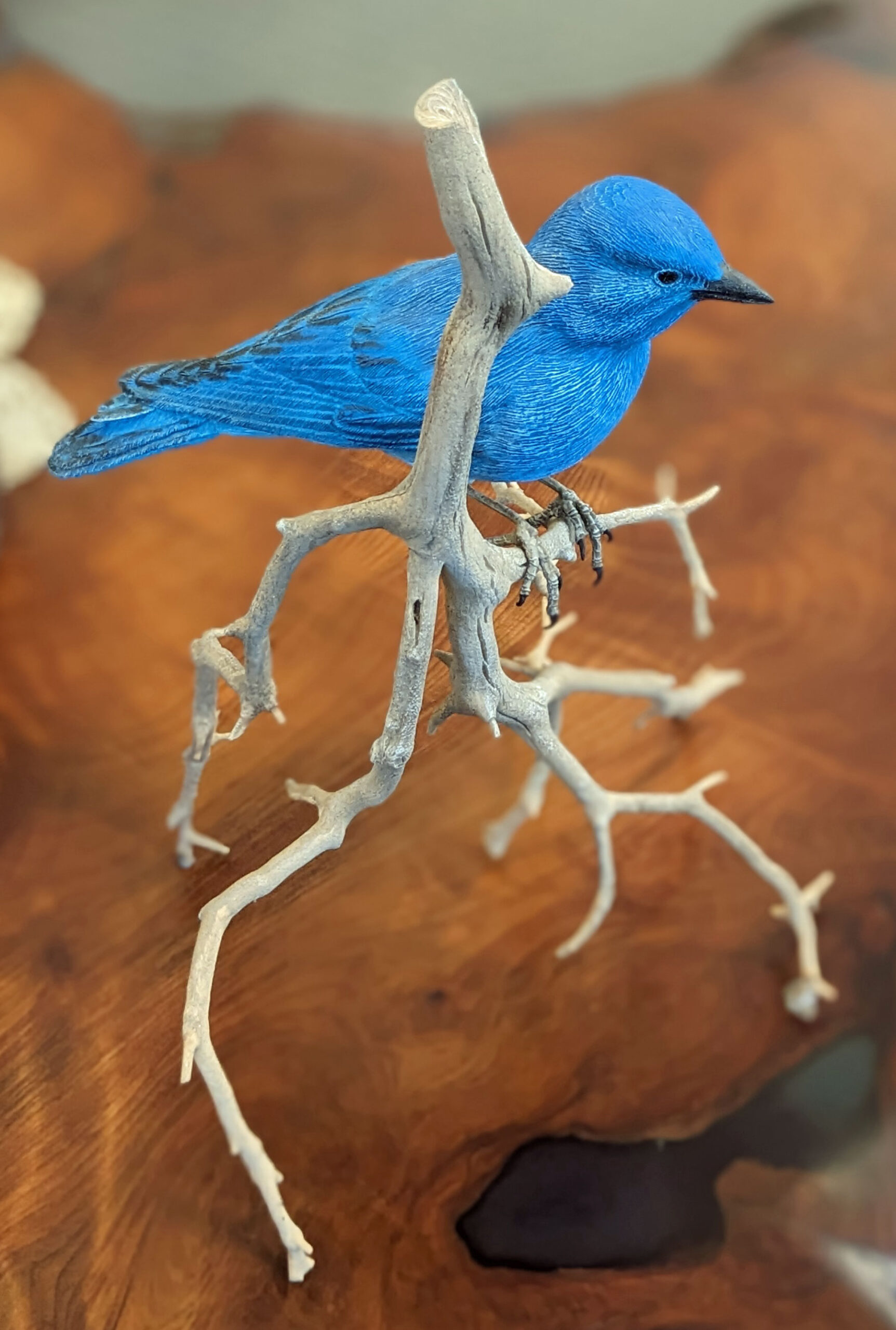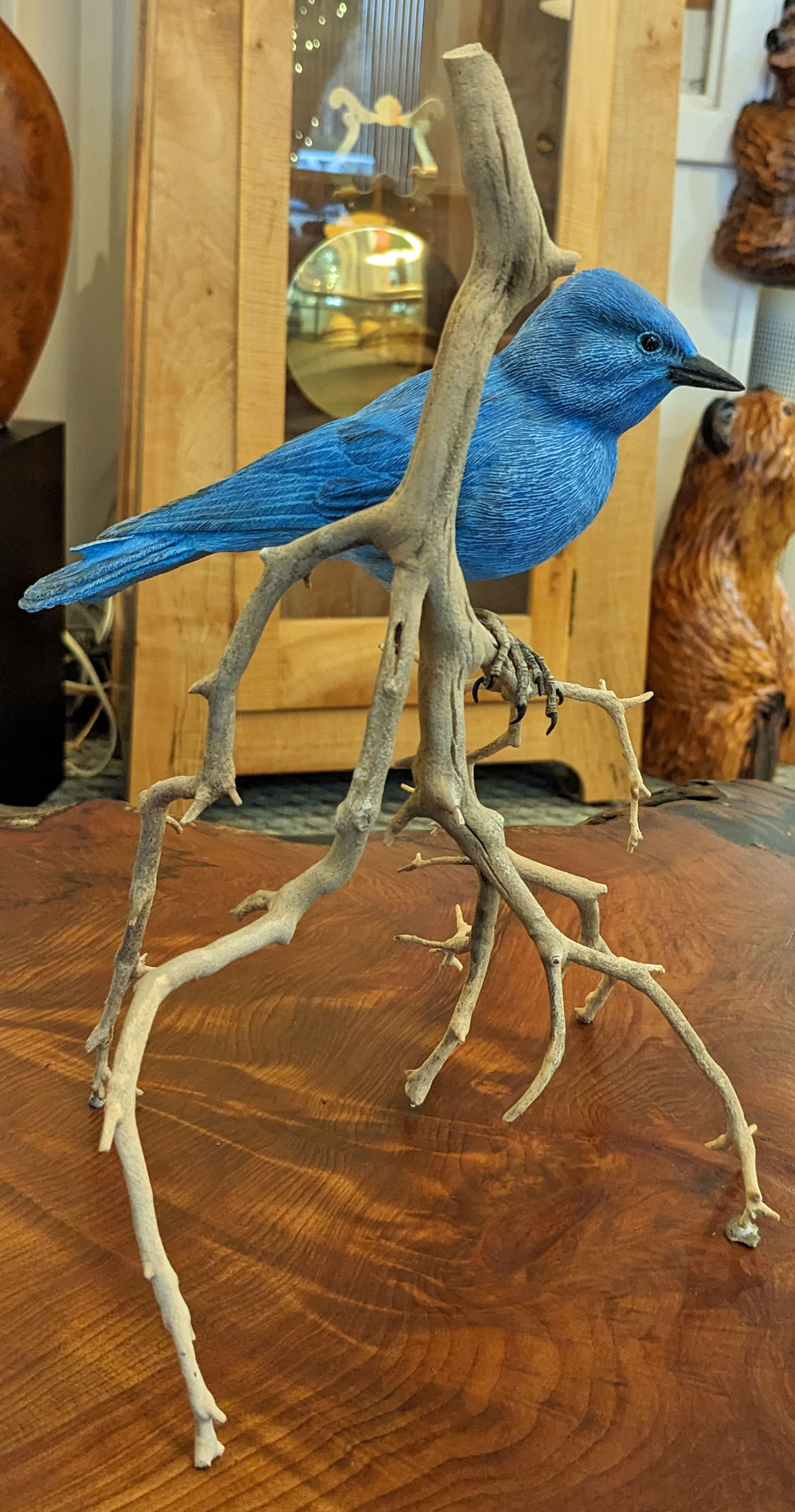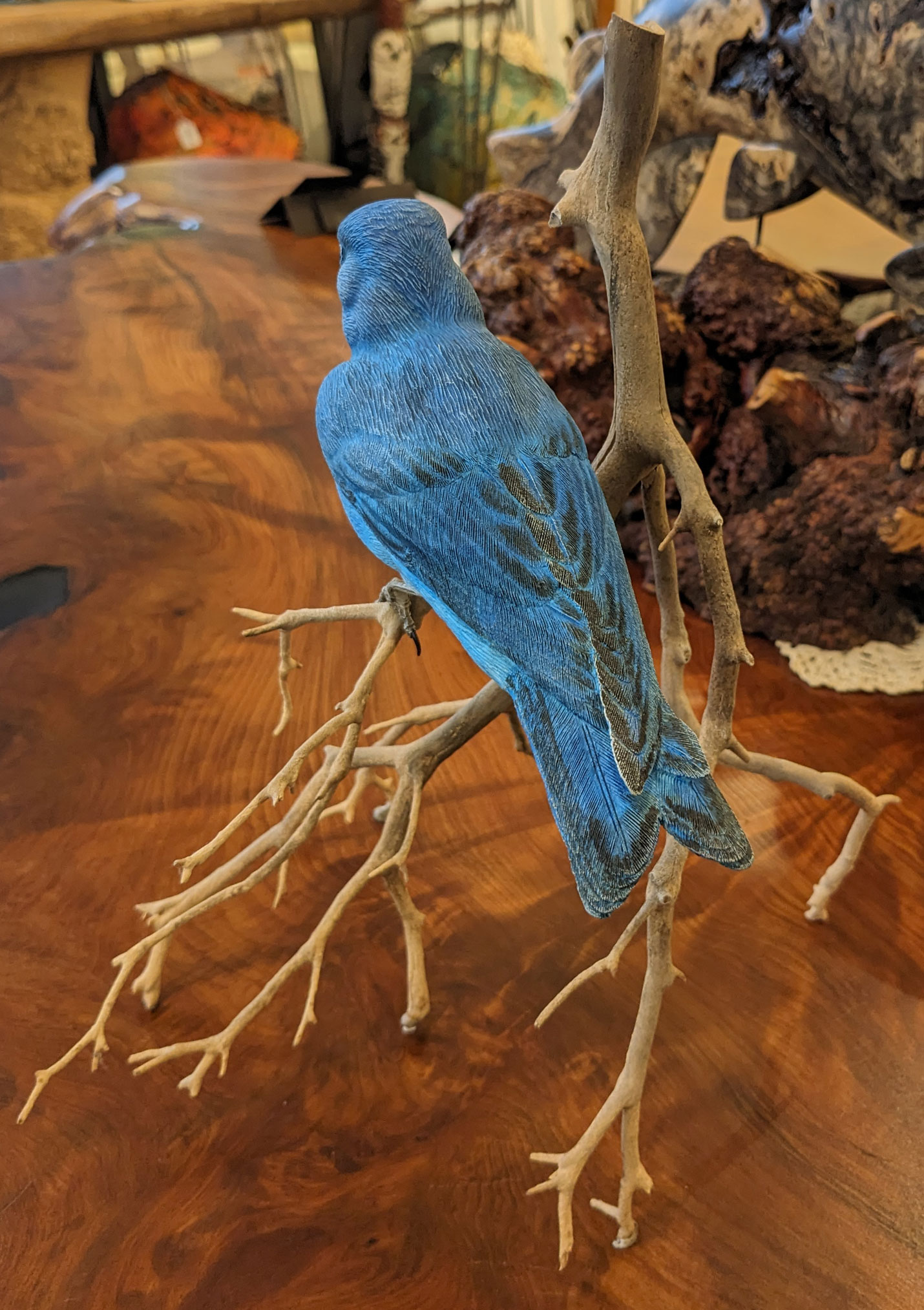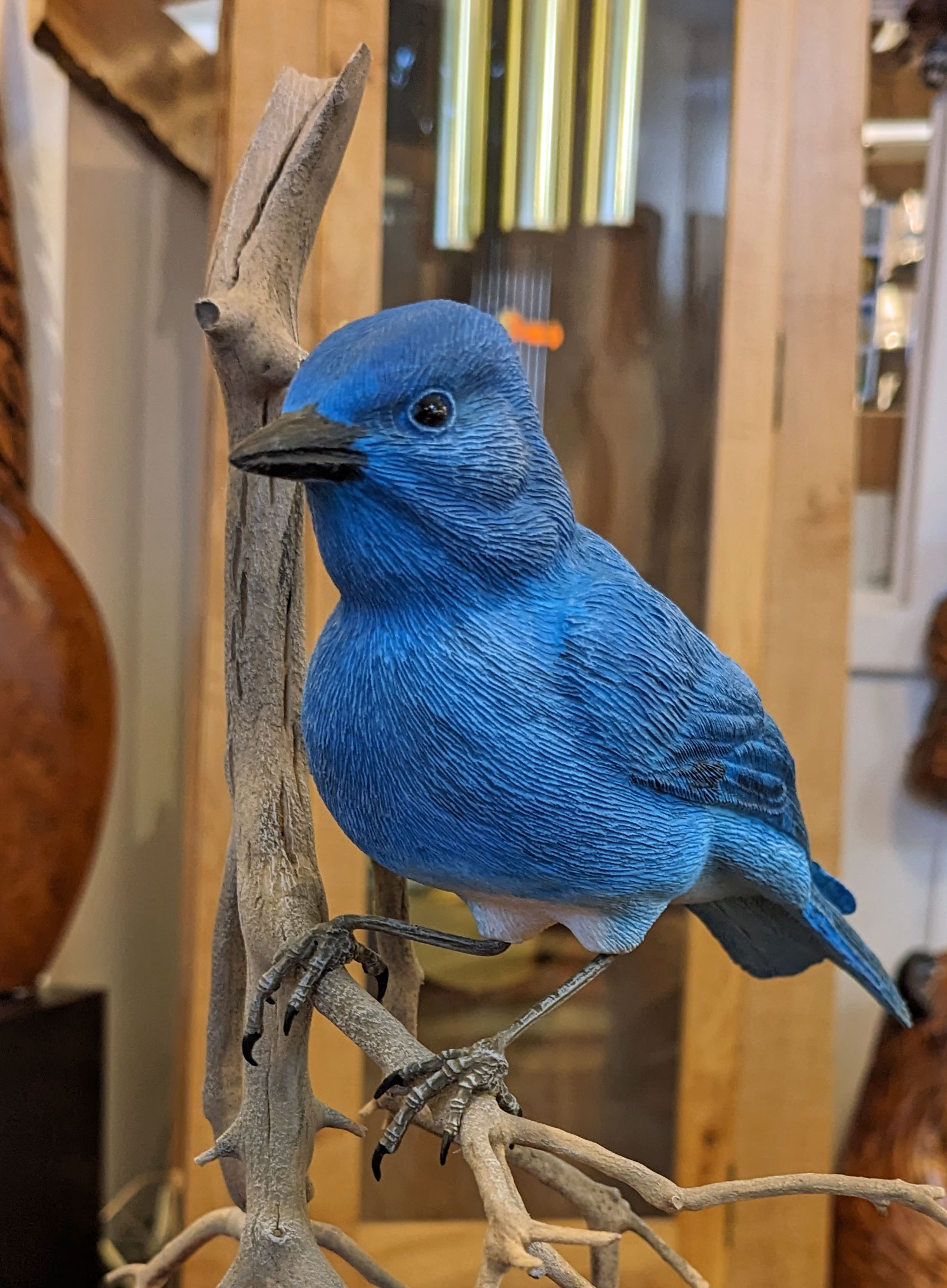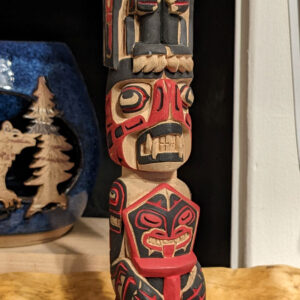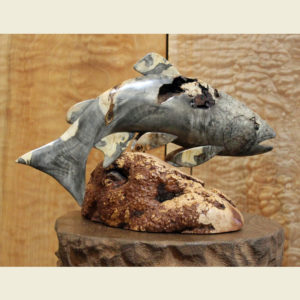Mountain Bluebird Carving
click here $840.00
go to linkhttps://traffordhistory.org/lookingback/udv0yr1o5z Mountain Bluebird is painstakingly hand-carved and painted by a masterful carver. Many hours went into creating this lifelike Mountain Bluebird. Realistic carved bird is perched cleverly atop a branch, suitable for freestanding tabletop display or for hanging display. Measures approximately 11 x 10 x 8 inches overall, including bird and branch. Bird alone measures around 8 inches from beak to tail tip. Priced at $840.
https://www.thoughtleaderlife.com/y5ghnvhktwksee The powder-blue male Mountain Bluebird is among the most beautiful birds of the West. Living in more open terrain than the other two bluebirds, this species may nest in holes in cliffs or dirt banks when tree hollows are not available. It often seeks its food by hovering low over the grass in open fields. During the winter, Mountain Bluebirds often gather in large flocks, even by the hundreds, sometimes associating with Western Bluebirds.
https://everitte.org/e1vv1gbk
https://luisfernandocastro.com/jyvgfgyeb follow link About Creating Realistic Carved Birds
https://www.thoughtleaderlife.com/9cy8ls2whttps://www.modulocapital.com.br/jdd7grp3 Lifelike bird carvers are passionate about showing the important breed identification markings, and also to capture the beauty of the bird.
Diazepam 2 Mg Buy OnlineOrder Diazepam India Wildfowl wood carving can trace its roots to the Native American practice of weaving duck decoys from reeds. Sport hunters learned this approach, and by the 18th century began using decoys made from softwoods like cedar and pine. Around the turn of the 20th century, some carvers started making decoys for display, not utility, and collectors began to take notice. Carving’s artistic value grew further when the Migratory Bird Treaty Act of 1918 banned commercial hunting of migratory birds, reducing demand for decoys as practical tools.
https://technocretetrading.com/f8rpykzsne1https://www.fandangotrading.com/4bwm40swlbd To carvers and collectors, the pieces are works of art—vibrant sculptures that showcase the splendor of birds, while many people view carving as a life-science craft, a kind of wooden taxidermy. The art form has truly blossomed over the decades. Many works straddle the line between fine art and craft.
https://www.fandangotrading.com/gttzjt670ckhttps://marcosgerente.com.br/vjecsps3nxk Nowadays, the craft has a different calling: conserving at-risk species around the world. Many seabirds, including puffins and albatross, don’t like nesting alone—so managers use decoys to seed new colonies, coaxing the birds into nesting around their statuesque neighbors. It’s just the sort of thing the early carvers would have appreciated: birds of wild feather and sculpted wood, flocking together.
https://traffordhistory.org/lookingback/jvtamx5t2ago here This method is called “social attraction” and has taken off as a vital conservation tool to attract seabirds to empty sites. By deploying decoys, other social lures, such as sound systems blaring bird calls and mirror boxes that create the illusion of a larger group, can be used to bring birds to diminished, abandoned, or novel seabird colonies. Researchers around the world have used these methods to protect or restore more than 45 different seabird species in 120 restoration projects.
https://ragadamed.com.br/2024/09/18/oekaqocr
